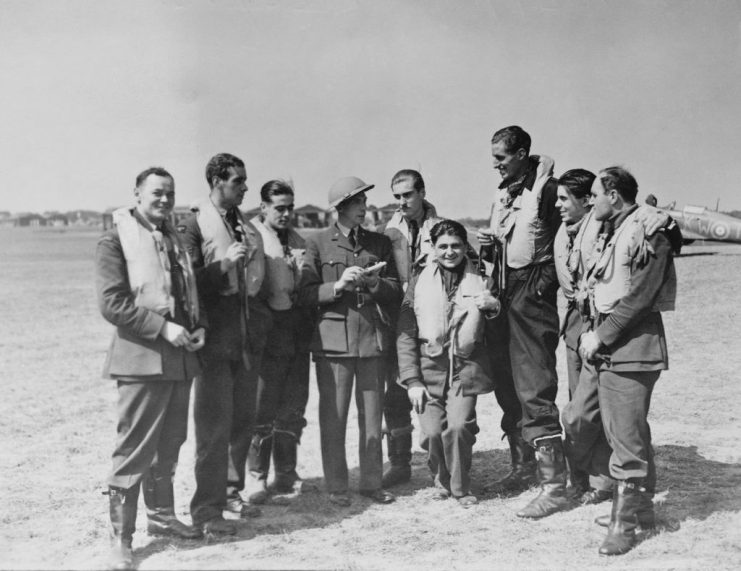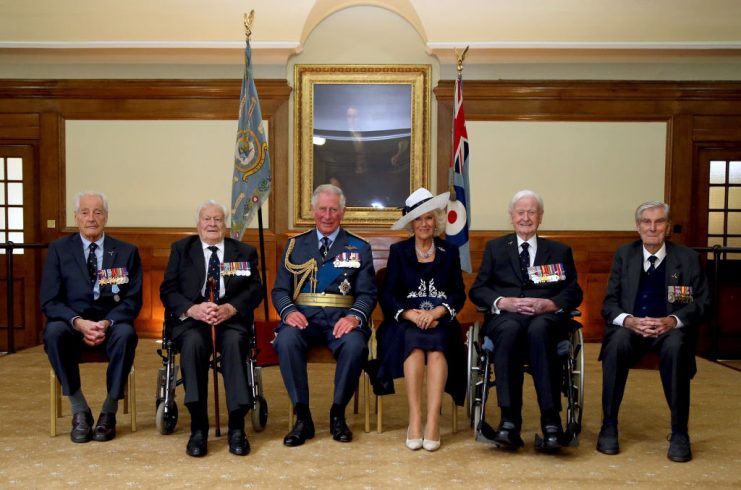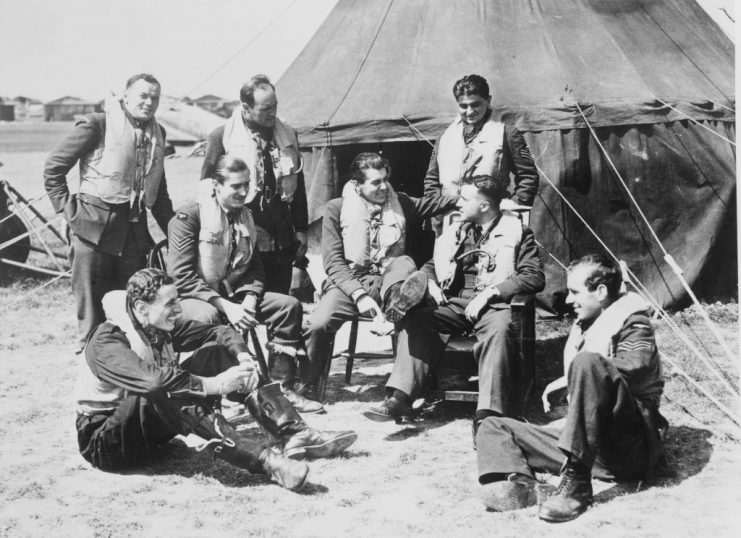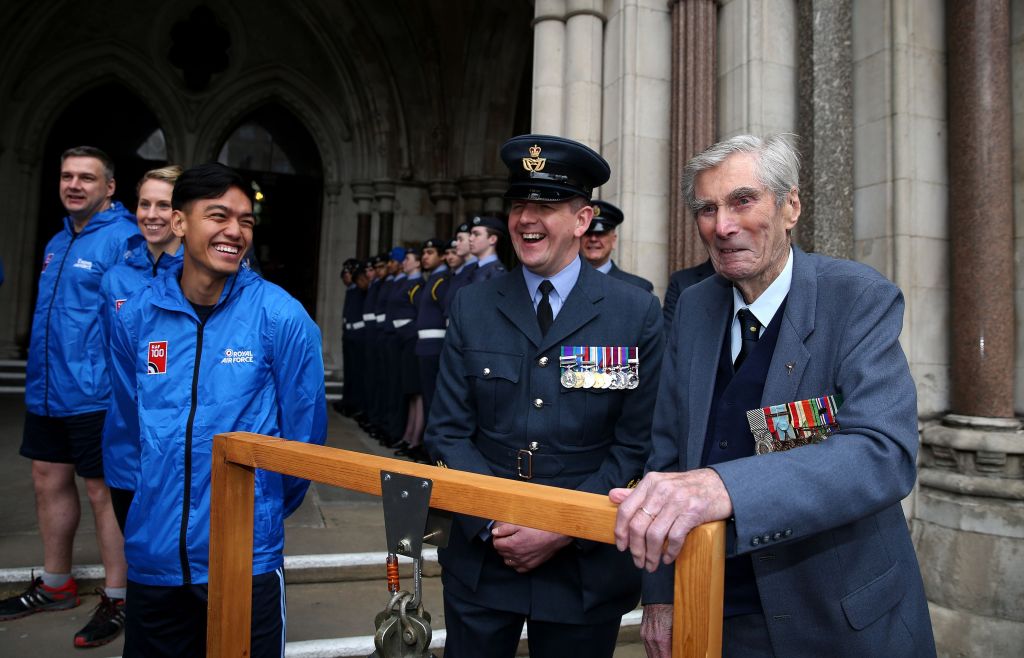The Battle of Britain, often described as a turning point in the War. Paul Farnes was born in June 1918 in Hampshire, England WWI was still to be won.
Twenty years later he was in training with the RAFVR (Voluntary Reserve) and in September 1939 joined RAF 501 Squadron flying a Hawker Hurricane. He left the RAF a Wing Commander in 1958.
At the outbreak of war Farnes was due to be sent to Norway with his squadron but when the Germans over-ran Belgium and invaded France in May 1940 the 501’s sixteen Hurricanes were diverted to Bétheniville near Rheims.
Two days later, on May 12th Farnes opened his account downing a Heinkel 111 bomber and sharing the honours in the destruction of two other aircraft.

As the German Army advanced and the Allied Forces were beaten back 501 Squadron scrambled for home.
Farnes and two comrades managed to get aboard a boat in St Malo bound for the Channel Islands where they were reunited with pilots who had escaped with their Hurricanes. They made their way back to Croydon Airfield where the 501 regrouped.
The Battle of Britain began soon after and in mid-July Farnes found himself back in action with 501 Squadron out of Gravesend in Kent.

On August 12th, 1940 his first confirmed kill was a Junkers 87 Stuka dive bomber on the South Kent coast.
Three days later he shot down another two Stukas, a Dornier bomber three days after that and later a Messerschmidt Bf 109.
Through September the battle intensified and Farnes, with his squadron, faced the enemy regularly. On September 30th a problem developed with the Hurricane’s canopy, so he was forced to return to base.

Flying near Gatwick, Sussex, the future site of London’s second International Airport, he encountered anti-aircraft fire being directed at a Junkers 88 bomber.
Farnes went on the attack and the enemy aircraft fell to earth close to the airfield. When he landed Farnes went to meet the surviving German pilot who was disinclined to shake hands.
501 Squadron stayed on the front line for a long time, longer than most, but were estimated to have destroyed more than 150 enemy aircraft at the Battle of Britain.
Farnes’ tally was six confirmed and as a result he was awarded the Distinguished Flying Medal and commissioned. His commanding officer wrote, ‘He has shown skill, calmness and reliability in combat.’
Following the Battle, he was deployed to Cheshire to pass on his knowledge and experience and train fighter pilots.
He was later sent to train pilots in Aden and then in February 1942 he joined 229 Squadron as a Flight Commander.
In April he was involved in very intense fighting and the squadron’s commanding officer was wounded which meant that Farnes had to step up and take command.
With typical modesty he later said of the promotion that, ‘As there appeared to be no one else available, I was made OC 229 Squadron.’
In July he was posted to Iraq and was promoted to Squadron Leader in 1944 after which he returned to the UK to command of 124 Squadron.
He remained with the RAF until 1958, training fighter pilots and attaining the rank of Wing Commander.
Since the end of the War and his retirement Farnes became an active supporter of the Battle of Britain Memorial Trust and could be seen at the annual reunions at Capel-le-Ferne until 2019.
He was the only Battle veteran still well enough to attend the event at the time.
Wing Commander Paul Farnes DFM died at his home in West Sussex, England on January 28th, 2020, the last remaining Ace fighter pilot from the Battle of Britain. He leaves behind a son and a daughter.
US Man Exposed as Nazi Commander Dies at Age 100
Two men, both survivors of the Battle of Britain remain, Flight Lieutenant William Clark and Flying Officer John Hemmingway.
